Namibia unlike other African countries is probably not the ideal destination for backpackers, I have thoroughly written about this in the post Backpacking in Namibia, although amply, and also quite aptly, called Africa for beginners.
The reason why the journey by public transport is virtually impossible is the fact that most of the points of interest of the country are in desert areas where there are no inhabitants, if not just the staff of the campsite or of the lodge where you will stay.
The beauty of Namibia lies in this very absence of people and infinite spaces where you can drive for hours without ever meeting anyone, apart from the period of high season when the all booked out occurs months earlier.
From Windhoek up, things get more simple, the majority of the population lives in this part of the country and thus the buses and minibuses begin to appear, a very slow railway line connects some destinations, sometimes you are forced to hitchhike, a practice fairly common among the locals who have no alternative.
A month and a half on the road. Left in the desert of Grunau to wait for a minibus, which never came by, under 45 degrees. A waiting that lasted 3 days to then change for a train.
Yes, the slowest train in the world. The first hitchhike of my life, because if not, today, I'd probably still be in Grunau.
The camping with the tribes, the driving of the 4×4, the minibuses in which, because of the crowds and the heat, I fainted a couple of times to find myself a few minutes later lying down somewhere with 20 people around me emptying their water bottles on me.
Namibia. The country where there is no transport. With 2 million people concentrated in the north. Where a train goes at 20km per hour, it stops in the middle of the afternoon while we touch the 47 degrees and I have forgotten to buy water, in consequence, my hallucinating.
In short, I would say that on the practical and uncomfortable level, this Namibia I believe to know pretty well.
I have, in this way, gathered all the information, first-hand and sweated, literally, that I want to share with you to help you realize a dream trip, without major hitches and some ideas to make this journey incredible
NAMIBIA TRAVEL GUIDES RECOMMENDED
As aleays when it's about Africa's guides, I highly recommend as a travel guide the Bradt Guide excellent guide as always.
https://www.instagram.com/p/BBXWYwytRiV/?taken-by=giuliaraciti
What have I learned during my months on the road and making a lot of mistakes? Here is some useful information about the Country and general. Follow more practical info for planning!
The dollar Namibian is equal in value to the South African Rand, if you arrive in Namibia with the South African Rand (ZAR) these can be used anywhere because the exchange rate is the same and these currencies are used simultaneously.
The Namibian dollar has no value though in South Africa, then if the intention is to cross the border, make sure to have changed, ask to shops or banks, the Namibian dollars in RAND.
Similarly, the Namibian dollar is not worth anything in Botswana. Make sure you change all the dollars before you cross the border.
In all the cities, including the curious Opuwo, there are ATMs and banks, obviously it is always recommended to bring along enough cash, in the event that the lines are not working, but in principle it is not only easy to withdraw cash but it is also quite common to pay by credit or debit card. From shops to supermarkets.
Many Europeand do not need any visa to enter Namibia, the entrance is free and whether you get in to the country by land or by flight, you will be granted a permission to stay for three months. There are no taxes to be paid and no permit is required to get out of the country.
Other nationalities might need it, I recommend then to check on the local Embassy to find out what is required to enter into the country.
Buying a sim card in Namibia is very simple, you are not even asked for a document and there is little to choose from since there is only one telephone company.
The company is the MTC, in order to buy the sim card just go to a Windhoek shopping mall, queue up and buy the package you prefer.
In general they work very well almost anywhere except in the Fish River Canyon and in the Epupa area. For more information on fees and costs click here.
Vaccines are not mandatory, except that for yellow fever if you arrive in Namibia from a country where this is endemic. Attention to water and sanitation conditions, which especially in the north are very scarce, and in any case, cholera is present here.
I hope that nothing happens and that the holiday may proceed in the best way, but it is still a country where hygiene conditions are not at the top, and if something should happen it is important to be covered in order to receive good care, or in the worst of cases, immediate return home without further problems.
In addition to considering the routine vaccines, for up to date information I recommend this site. It is very important to take out travel insurance that will cover you for any eventual and possible hospitalization or medical expenses. I always buy insurance with WorldNomads, it allows me to cover different countries and can always extend it if I decide to keep on traveling.
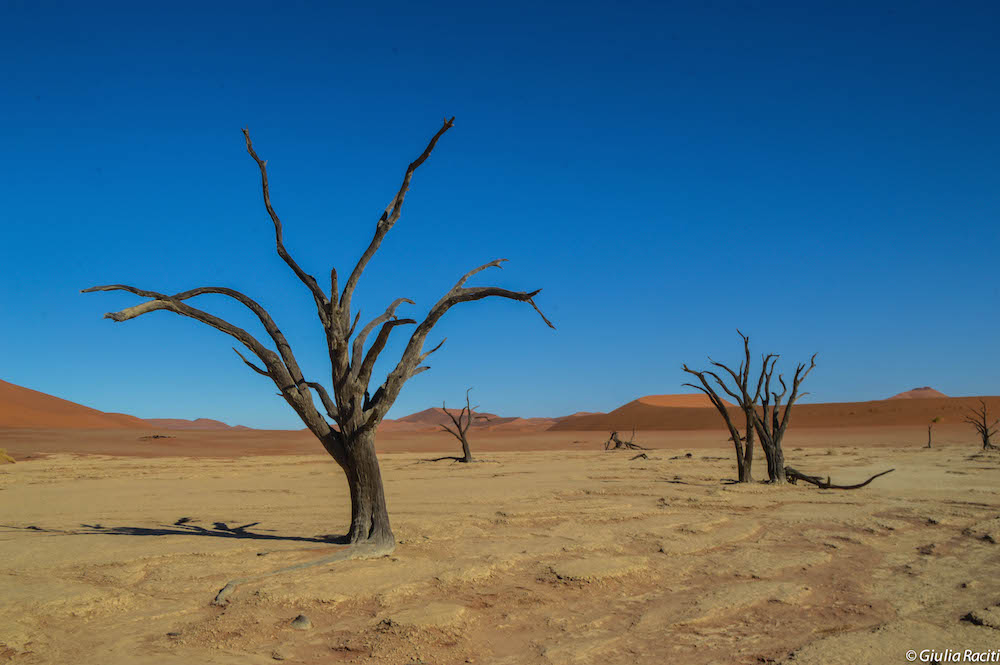
Plane
For those flying, the arrival airport is Windhoek, like that of departure. Flights from Europe cost approximately €650 to €1,000 per person round trip. Obviously, the longer the journey the more it costs. To check the rates, verify on Skyscanner.com that compares prices of many companies listing travel options based on prices.
Car
For those driving their own car, or a rented one, remember to check that the car can cross the border and has the proper papers to do so.
You do not need a carnet du passage but if the car has been rented out in South Africa or Botswana you need to inform the rental company and make sure the car can cross the border.
The Namibian borders are as follows:
[wc_row][wc_column size="one-half" position="first"]
Namibia - Angola
Ruacana: 7:00 - 18:00
Omahenene: 8:00 - 18:00
Oshikango / St. Clara: 8:00 - 18:00
Rundu: 8:00 - 18:00
Namibia - Botswana
Impalila Island: 7:00 - 18:00
Ngoma Bridge: 7:00 - 18:00
Muhembo / Shakawe: 6:00 - 18:00
Buitepos / Mamuno: 7:00 - 18:00
[/wc_column][wc_column size="one-half" position="last"]
Namibia - Sudafrica
Klein Menasse / Rietfontein: 8:00 - 16:30
Ariamsvlei / Nakop: 24 hrs
Vellorsdrift / Onseepkans: 8:00 - 17:00
Noordoewer / Vioolsdrift: 24 hrs
Oranjemund / Alexander Bay: 6:00 - 22:00
Sendelingsdrift: 8:00 - 17:00
Mata Mata: 8:00 – 16:30
Namibia - Zambia
Wanela (Katima Mulilo) / Sesheke: 6:00 - 17:0
[/wc_column][/wc_row]
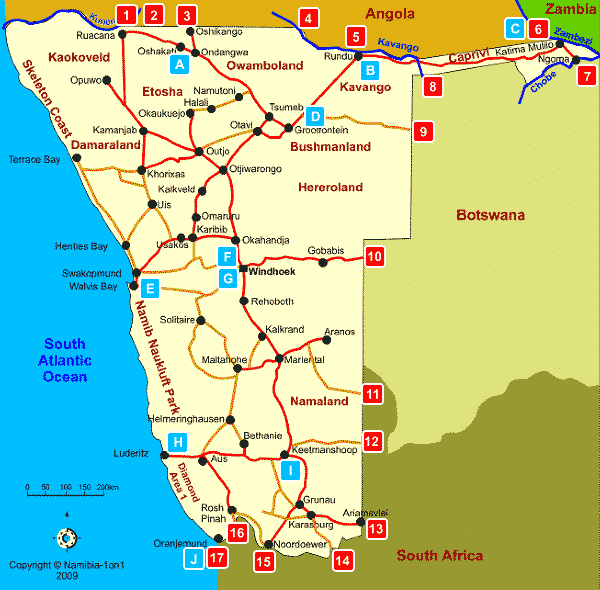
For those traveling by public transport you can enter the country more or less easily, depending on the routes and final destinations. An excellent solution is the Intercape, to check for routes and prices click here.
There is a direct route Cape Town - Windhoek, a trip of about 17 hours, starting early in the afternoon and arriving in the early morning in Windhoek. Buses with air-conditioning, because there is need of it, and quite comfortable. It is not a health outing but if I think of the alternatives, it could be far worse, for example the mythical minibuses, 17 hours on an Intercape are not more dramatic than 3 hours on a Tanzanian dala-dala!
From Botswana the ways to get in are mainly two, but the easiest is via Katima Molilo, returning from the east border is a little longer and it depends on the luck to find the minibuses. In general the transit Katima - Maun can be done in about a day's journey including the crossing of the border.
Train
The less convenient, longer and more difficult solution. If you want to get to Namibia from South Africa by train, the only way is to arrive in Ketmanshoop by bus and from here take the train to Windhoek.
I took this train twice and I can guarantee that they are very slow, a nice experience to do once but I would not totally trust the rails.
Not in Namibia.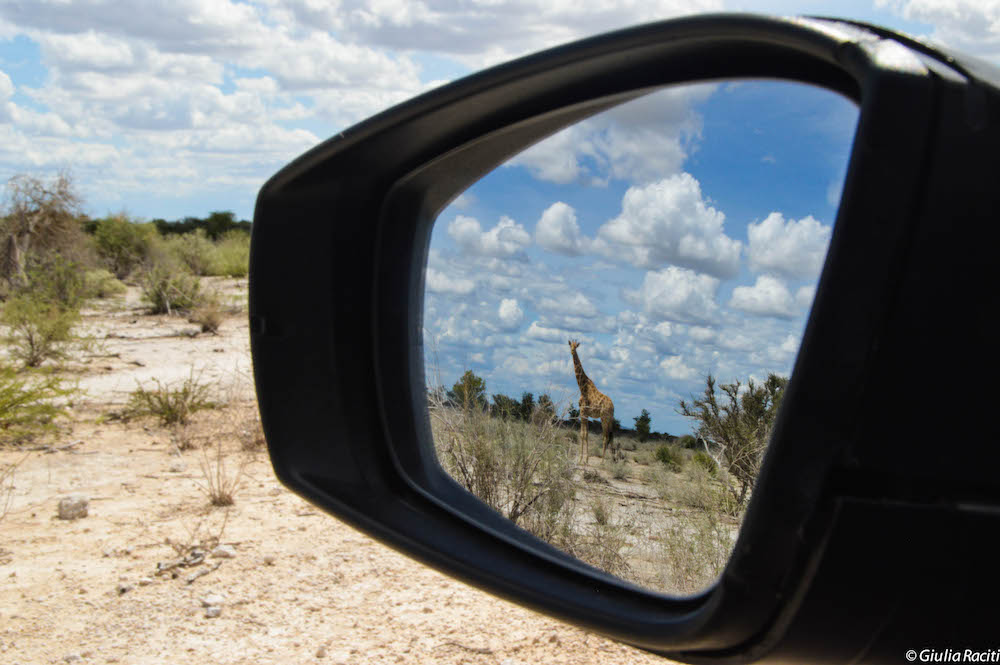
Namibia is largely a desert country, so in general it's always hot and it rarely rains, but when it rains, in the rainy season, it pours! The seasons are mainly two: winter and summer.
[su_panel][wc_row][wc_column size="one-half" position="first"]
MAY/OCTOBER
[/wc_column][wc_column size="one-half" position="last"]
OCTOBER/APRIL
[/wc_column][/wc_row][/su_panel]
The summer months are excellent (from May to October), it's hot but not too much, not like what I had dramatically experienced myself with relative faintings in the middle of the road from time to time, so an excellent period is that from May to October.
This, however, does not mean they are the only possible months. Namibia is beautiful 12 months a year and, even if the heat with November, begins to be felt, it is right after the rainy season that the colors come alive.

The streets of Nambia although in the main dirt roads, are in any case in very good conditions, easy to drive on dirt roads even with a 2×4 although on some occasions a 4×4 would be preferable.
Public transport links, though, are a sore point. Because of the limited population, only 2 million for the entire country, the presence of buses and minibuses are lacking too, the connections are limited to the principal inhabited locations that in most cases have little to do with the places you want to reach: the desert, the Fish River Canyon, Etosha National park, Epupa and so on.
Therefore getting into town does not necessarily imply the possibility to reach these places in the middle of nowhere.
The means of transport in Namibia are mainly the following:
The truth is that if you have little time and you do not want to lose the best of Namibia you must inevitably rent a car or rely on some tour operators offering overland tours, for groups or privates, or take part in shorter tours, which generally leave and return to Windhoek, at very affordable cost.
It is possible to travel a good part of Namibia with a standard 2×4, in some cases, however, the 4×4 is essential, I refer for example to the Skeleton Coast, Cape Cross, Epupa Falls, the Dedelveil.
To get to the dunes and the Dedelveil it is not mandatory to have the 4×4 because there are two alternatives to reach them.
You can, in fact, leave the car at about 5 km before the Dedeveil and continue on foot, not fun with the heat of the early afternoon, or, option B definitely less tiring, take the shuttles on payment thought out for the tourists without cars to drive on the sand.
In general, driving in Namibia is simple and a 2×4 is enough (make sure you have a spare tire). So if you are traveling alone or you have a limited budget and do not want to give up the pleasure of Self Drive just rent a 2×4, I recommend you bring your own tent and camping equipment (also that for cooking).
Alternatively, for those who can spend a little more it is not a bad idea to hire a 4×4 with tent and camping equipment included (table, chairs, kitchenware, etc).
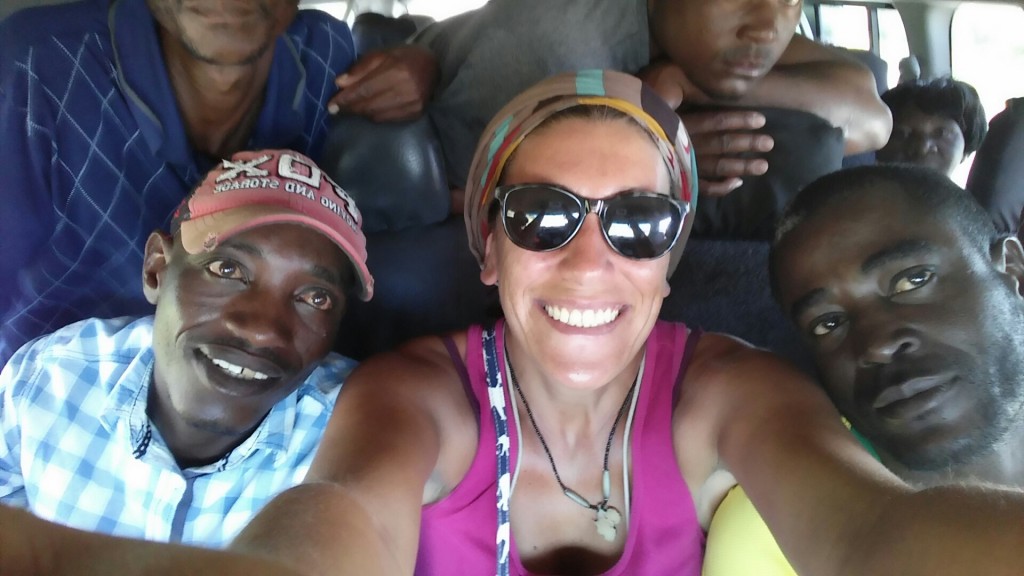
Accustomed to the standards of Eastern Africa, Namibia has surprised me in the same way as South Africa. In the major urban tourist destinations, there are hostels, among other things, very beautiful and well-equipped. For the rest of the trip I have almost always camped carrying with me a tent, a sleeping bag and a ground mat for the entire duration of the trip.
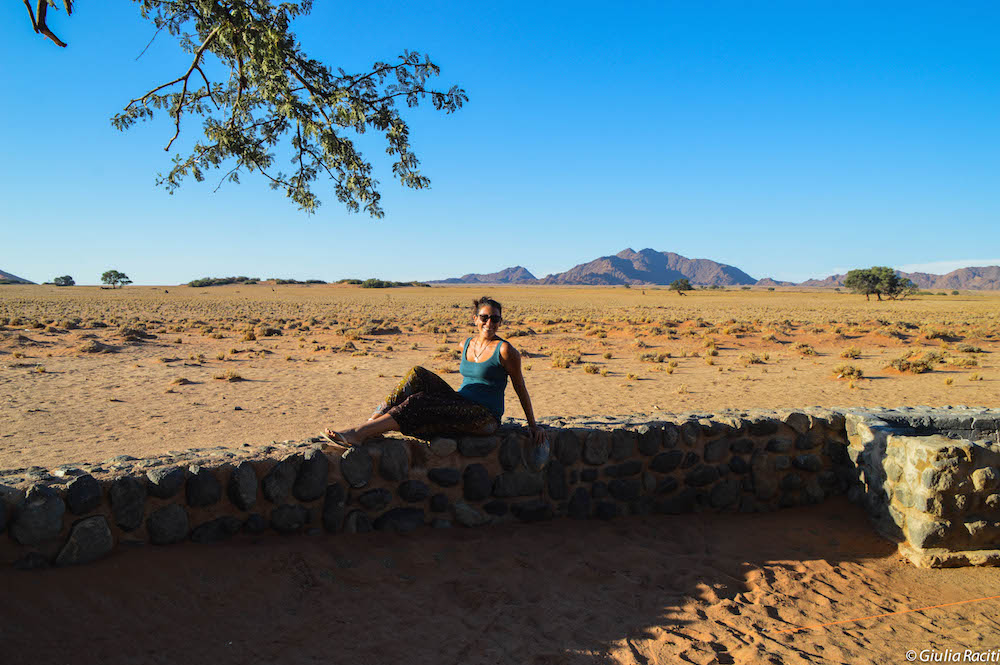
I have already written a very long post about the difficulty of traveling Namibia by public transport, to which I refer: Backpacking in Namibia.
In this section, I will dwell briefly on this topic that I have amply discussed some time ago simply by listing the three different travel options, although really in the end, they boil down to two.
The overland tours are group trips, of course, they lower the total costs, make you share a travel experience.
Although some offer up to 25 days traveling in group, for those who do not want to give up totally their independence, there is a separate option, or rather, to alternate short group tours to independent traveling.
A 22 days overland can cost around 2200€ per person, choosing to couple distinct tours, could further lower costs and above all let us choose where to go on tour and where to go on your own.
For example, the classic itinerary starting in Cape Town and ending in Windhoek, including Etosha, Swakopmund, Sesriem and Fish River Canyon, of 11 days in a group tour, costs about 800€ per person all included (camping), check this overland out.
You can combine the tours as you want and compose your own itinerary as you see fit. Ideal then for those with limited time and traveling alone. Sharing costs and making friends!
Here is a list of overland tours options in Namibia, up to 22 days, you might find what you are looking for.
Al Tour Operators are very well known on the Country and abroad, so I am sure that, if overland is what you are looking for, you'll find the best deal here.
ADVICE
Single travelers, with plenty of time, can wait in a hostel in Windhoek and ask other tourists if they have a place in the car and would like someone to share the costs with them. It is possible to find someone willing to do so within 48 hours or more, which is why this method is not ideal for those who want to cover the whole country and has only 20 days available.
For the hardcore for public transport, alas, Namibia will give you a hard time, and it is just not possible.
Hence the solutions are reduced again to overland tours and car rental.
From Windhoek upwards, excluding the Etosha, it will be pretty easy to travel by bus and minibus, an easy African service excluding the Intercape bus.
At least to cover central and southern Namibia.
Doing self-drive in Namibia is fantastic and the best way to travel and discover this huge country.
Kilometers and kilometers of driving without ever meeting a single car. The roads are all pretty good, even to drive with a 2×4, the roads that require a 4×4 are few. However, I must remind you to drive carefully, every year many accidents are registered, even fatal ones, due to the carelessness of the driver and the apparent simplicity.
Tips for those driving in Namibia
These are the 4 things you cannot miss out in your travel baggage, tent and mattress avoidable if you sleep in a lodge, otherwise a requirement for anyone wishing to travel in Namibia and trying to limit costs.
The National geographic map, essential to find travel options and to draw them. The torch, to use virtually ALWAYS. The tent and the mattress, rigorously light especially if, at some point, you go by public transport.
[
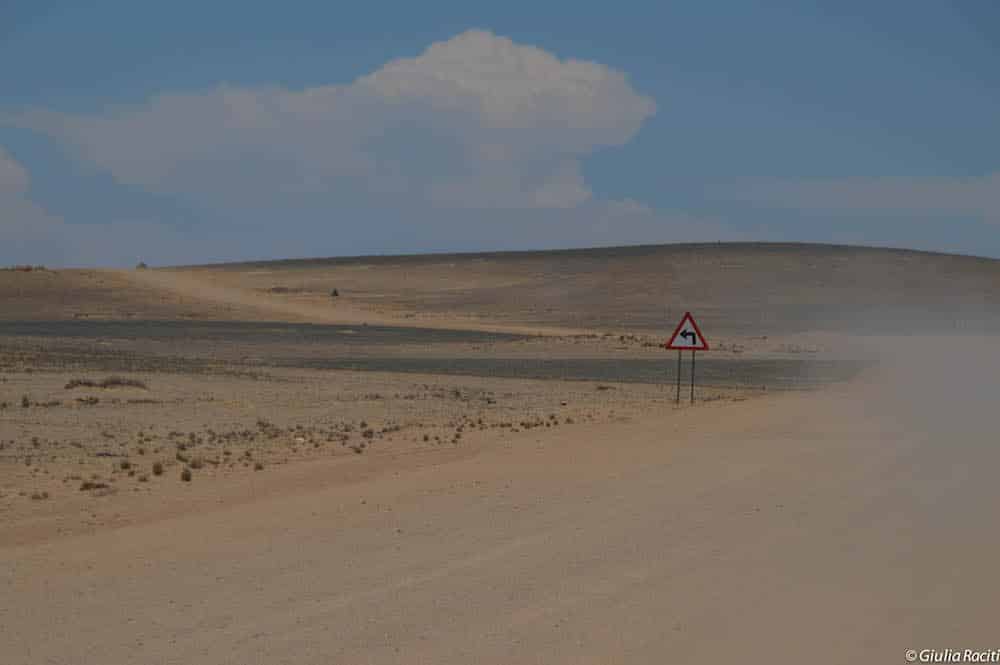
READ: 3 suggested travel itineraries in Namibia
Not sure what path to take? Read the post and design your own fantastic trip!
In three weeks you can visit all of Namibia, on condition that you have your own car.
The classic itinerary could follow this route leaving from and returning to Windhoek, shortly I will publish another 4 routes, of which the hybrid or rather the one done by me, alternating all the possible means of transportation, including hitch-hiking!
1 - Windhoek
2/3 - Kalahari desert
3/4 - Mariental
4/5 - Fish River canyon
5/6 - Soussuvel
7/8/9 - Swakopmund, Spitzkoppe and Skeleton Coast
10 - Twyfelfontain via Cape Cross
11 - Palmwag
12/15 - Opuwo and Epupa Falls
16/18 - Etosha N.P
19- Cheeta conservation Fund and Crocodile
20 - Back to Windhoek
21 - Departure
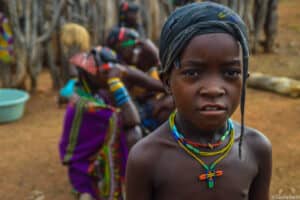 This moment, which lasted two weeks, was the most beautiful part of my Namibian trip.
This moment, which lasted two weeks, was the most beautiful part of my Namibian trip.
Having some experience with African tribes, with which exactly one year before I had spent time in the Omo Valley in Ethiopia, in Namibia too, I tried to create a private and distinct moment, compared to others who, with the tribes, stop just the time for a photo, with the Himbas.
The ideal region to make this experience is Opuwo, near Epupa Falls on the border with Angola. This area is full of villages that are not visible from the road and to it requires a 4×4 to reach them, but also a guide who knows where they are and especially to translate.
After a day trip with several minibusses, waiting at 1 p.m. in the hot sun of February and about 43 degrees, and to have passed out under a tree awakened by bottles of water thrown on me by bus companions, I finally arrive in Opuwo in the evening.
Jimmy and I organized a trip among the tribes, giving me wonderful days planting my tent surrounded by cow and goat poop but in the company of the Himbas and Dhembas who hosted me in the villages as if they had always known me.
This part of the trip has been rather expensive, also because I organized by myself, but it was worth every single dollar
For those wishing to organize a few days with the tribes you will need the following things:
READ - NAMIBIAN TRIBES - A JOURNEY INTO THE BUSH
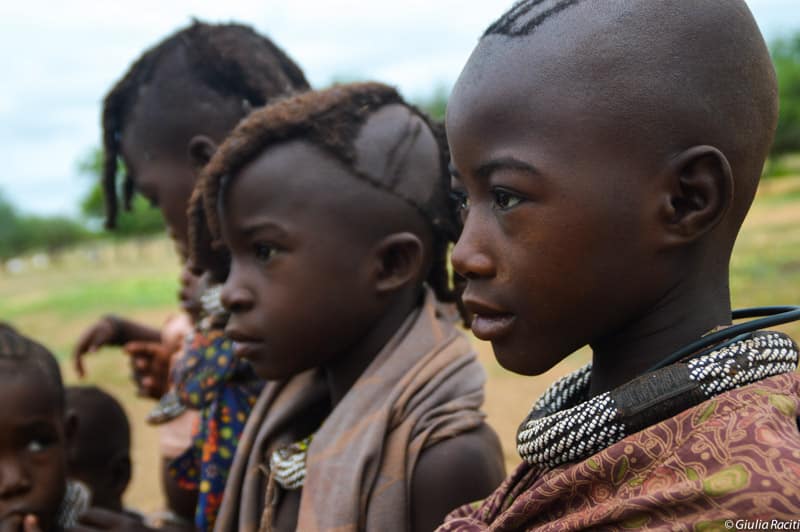
Namibia is one of the safest countries in the whole of Africa, there is no danger for solo travelers nor for women. It generally recommended to be careful only in Windhoek, for the rest, Namibia is a beautiful country, very safe and inhabited by few but wonderful people.
Disclaimer: In questo post, alcuni dei link forniti sono link di affiliazione, il che significa che posso guadagnare una commissione se si effettua un acquisto attraverso questi collegamenti. Tuttavia, ciò non comporta nessun costo aggiuntivo per te. Le commissioni che ricevo attraverso questi link di affiliazione aiutano a finanziare e supportare il mio blog, mantenendo così la sua indipendenza e la mancanza di sponsorizzazioni. Mi sforzo sempre di fornirti le migliori informazioni e consigli possibili, basati sulla mia esperienza e ricerca personale. Mi preme sottolineare che il tuo sostegno è fondamentale per mantenere vivo questo blog e continuare a fornirti contenuti di qualità. Grazie per il tuo supporto!
Alcune immagini pubblicate sono state tratte da Internet, nel caso in cui, il loro utilizzo, violasse diritti d’autore, mandateci una mail a [email protected] e verranno immediatamente rimosse.